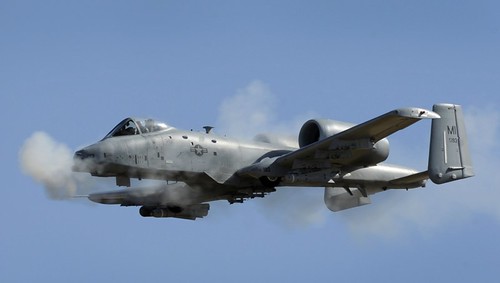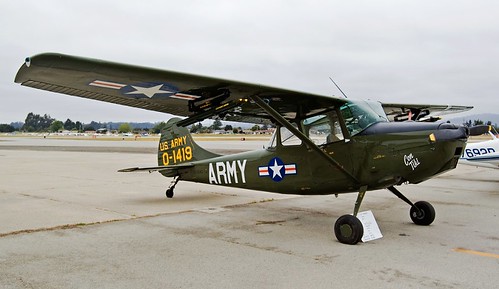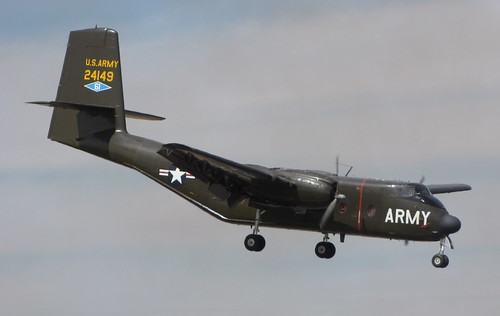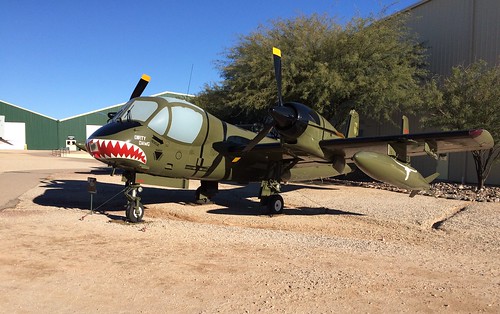Army A-10s? Not gonna happen, folks.

Here’s something I posted to Facebook the other day:
People ask me why, if the Air Force no longer wants A-10s, it doesn’t just hand them over to the Army. The answer boils down to roles. From the 1960s into the early 1990s, the Army flew an armed observation aircraft called the OV-1 Mohawk. The USAF fought the Mohawk almost every step of the way, even getting DoD to prohibit the Army from flying it with weapons aboard. The Air Force is very protective of its doctrinal role and won’t tolerate the Army flying armed fixed-wing aircraft.
That’s broad-brushed and doesn’t do the subject justice, so I’ll expand on it here.
From the earliest days of Army aviation, air power pioneers like Billy Mitchell argued that the use of aircraft should be centrally controlled by a single air commander, independent of ground commanders, and used for strategic purposes. Mitchell envisioned thousand-plane coordinated attacks, and actually pulled off one such attack in WWI, although with the primitive equipment and weapons available at the time it wasn’t in any way decisive.
These doctrinal conflicts continued into WWII, with constant skirmishes between Army ground and air commanders over the control and proper use of aircraft. Ground commanders wanted to integrate air assets into the ground battle. Air commanders wanted to play a direct role in winning the war by striking the enemy deep inside his own territory. Air commanders generally prevailed in WWII. Thousand-plane bombing raids became a reality, with devastating effects on Germany and Japan.
The National Security Act of 1947 separated the Air Corps from the Army, setting up an independent, co-equal US Air Force. The air commanders, in other words, had won their long battle. While the Navy and Marine Corps got to keep their own air arms, to control in whatever manner they saw fit, the Army surrendered most of its ability to fight from the air to the Air Force.
A series of subsequent agreements refined the responsibilities and roles of the Army and Air Force: the Key West Agreement of 1948, the 1952 Pace-Finletter Memorandum of Understanding, and the Johnson-McConnell agreement of 1966.
In the simplest terms, and ignoring the Navy and Marine Corps for now, the separation of roles comes down to this: the Air Force owns fixed-wing aviation, the Army owns rotary-wing aviation. The Air Force flies fixed-wing aircraft for strategic and tactical airlift, attack, reconnaissance, bombing and interdiction, air superiority, and close air support. The Army flies helicopters in tactical combat and support roles. The Air Force, with the exception of special operations, can’t use helicopters for attack or airlift. The Army can have fixed-wing aircraft weighing less than 5,000 pounds, but cannot fire or drop weapons from those aircraft. If the Army needs airlift or close air support and can’t get it done with its own rotary-wing assets, it calls on the Air Force for support.
During the Korean and Vietnam Wars, the Army used small Cessnas (well under 5,000 pounds) for liaison, scouting, and observation. These aircraft, while not armed, carried smoke rockets to mark targets on the ground, which Army attack helicopters or Air Force fighter-bombers would subsequently attack.

In the early 1960s the Army began operating C-7 Caribou aircraft, using them for tactical airlift in Vietnam. The Air Force, which had no problem with the Army flying light observation aircraft like the Bird Dog, objected strenuously to the Army flying 25,000-pound cargo planes, seeing the Caribou as a direct threat to the Air Force’s own tactical airlift role. In 1967, the Caribous were transferred from the Army to the Air Force.

So what’s the closest thing the Army has had to a fixed-wing close air support aircraft like the A-10? That would be the OV-1 Mohawk.

The Mohawk, designed in the late 1950s by Grumman, was originally to be a joint Army, Navy, and Marine Corps aircraft. It would have been uneconomical to build a separate, unarmed version for the Army; since the Marine and Navy versions would contain weapons circuitry and hard points, so too would the Army version, a touchy issue for the Air Force, which objected to the program on that basis.
After the Navy and Marines dropped out of the buy in the early 1960s, leaving the Army as the only customer, the Air Force lobbied even harder against it, fearing that since the Mohawk could be armed it would be, and would then be used for close air support — an Air Force mission — by Army ground commanders. Largely because of Air Force objections, in 1965 the Pentagon handed down a directive dictating that the Army would not operate armed fixed-wing aircraft. Nevertheless, the Army was allowed to buy nearly 400 Mohawks, flying them from the 1960s into the early 1990s.
In spite of the 1965 directive and earlier restrictions limiting the weight of Army fixed-wing aircraft to 5,000 pounds or less, the Army now had hundreds of 18,000-pound weapons-capable Mohawks, flying them in combat during the Vietnam War and Desert Storm, though officially only in the observation role. Army aviation unit commanders often saw to it that combat Mohawks were in fact armed, ostensibly for “self defense,” and one Mohawk crew, in 1966, was actually credited with shooting down a North Vietnamese MiG-17.
The Mohawks were retired after Desert Storm, and as far as I know the Army no longer has a weapons-carrying fixed-wing aircraft in its inventory. It does operate a number of unarmed fixed-wing aircraft in the cargo, reconnaissance, and utility roles — interestingly enough, all well over 5,000 pounds in weight — but if the Air Force has any objections to the Army’s current fixed-wing fleet, I haven’t heard of it.
I think you can see from all of this that the idea of turning the A-10 fleet over to the US Army is a non-starter. It’s probably fair to say both the Air Force and the Army would be opposed to any such proposal, the Air Force for doctrinal reasons, the Army for budgetary ones.
Now for a couple of points that are beyond the scope of this post:
I often hear the Air Force slammed as an elitist flying club with a nasty propensity to turn up its nose at the idea of providing close air support to lowly Army grunts. The criticism is unwarranted and unfair. Since its independence the Air Force has flown close air support for ground forces in every war from Korea to the present day. Air Force fighter-bombers flying CAS saved 6,000 Marine asses at Khe Sanh. A-10s are flying CAS today in Afghanistan.
The Air Force objects to the idea of turning control of its aircraft and aircrews over to ground commanders. So long as our air commander controls our aircraft, we’re happy to provide close air support. Well, maybe “happy” isn’t the right word, but we do it and always have. We even detach Air Force pilots to serve as forward air controllers with Army units on the ground to help target Air Force aircraft and weapons on enemy forces.
Is the A-10 still viable and should it remain in the Air Force inventory? That depends on the enemy and the battlefield. In a conflict where the enemy doesn’t have access to sophisticated surface-to-air weapons, yes. But all potential enemy military forces today have these weapons, and even ragtag groups like ISIS or the Taliban might be able to get their hands on them. Low and slow aircraft like the A-10 (and Army helicopters) are sitting ducks in the face of such weapons. Even 5th-generation fighters like the F-35 are going to be vulnerable to sophisticated surface-to-air weapons. The close air support mission itself, at least as currently flown with manned fighters and attack aircraft, may be a thing of the past.
But that’s what we said about dogfighting and aerial gunnery when we designed the F-4 Phantom II, and we were so confident those days were past we built the thing without a gun. Boy, did Vietnam show us how wrong we were about that … so what do I know?